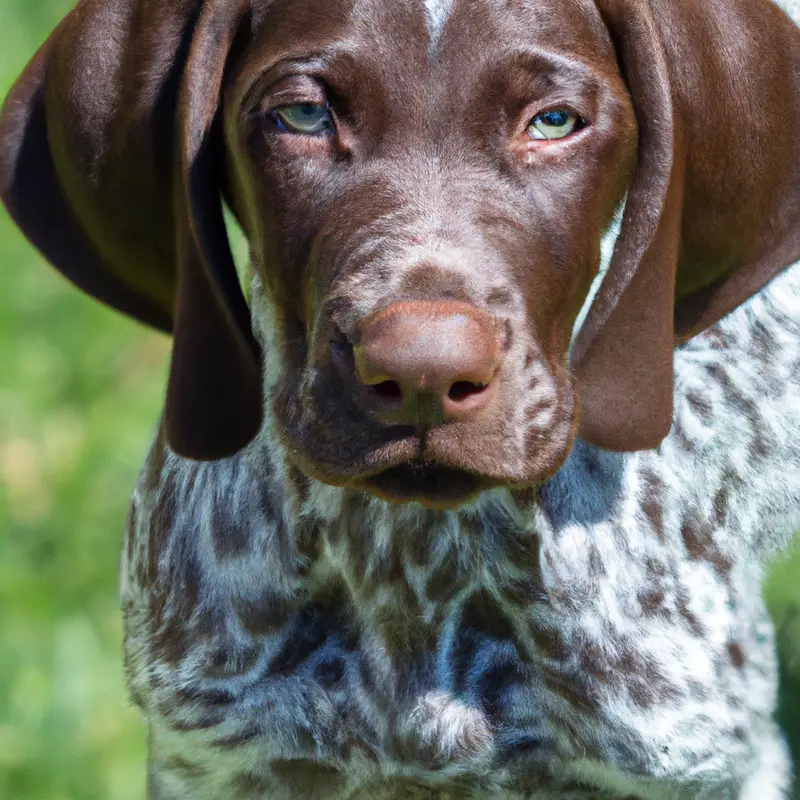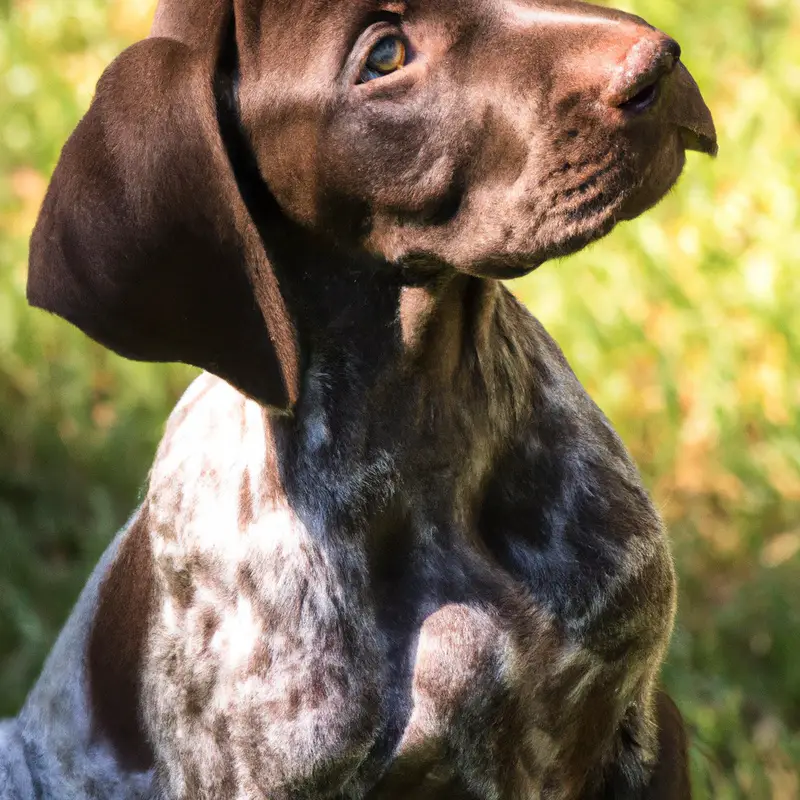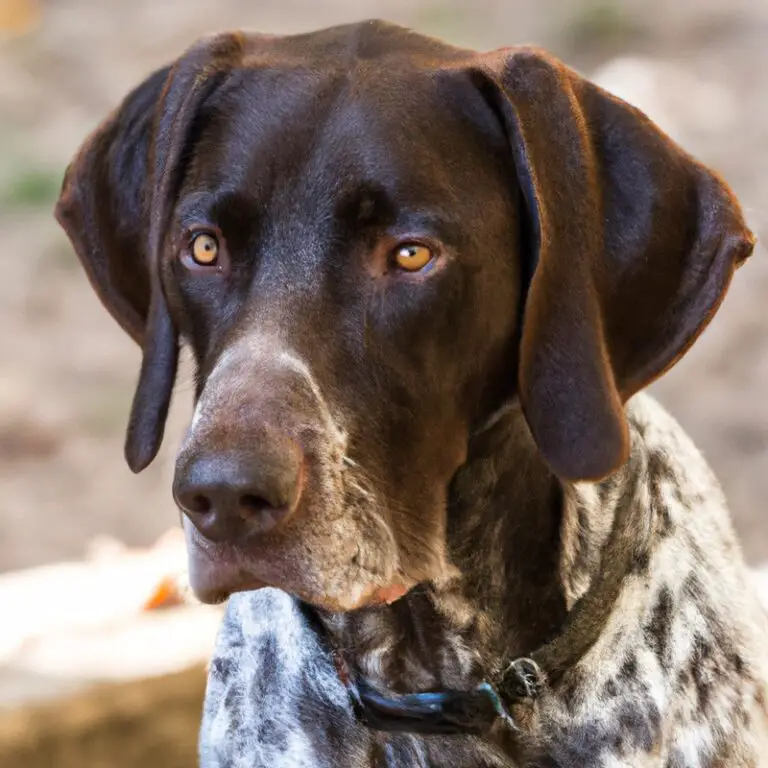What Are The Signs Of a German Shorthaired Pointer Having An Eye Infection?
Key Takeaways:
- Redness and inflammation of the eye could indicate an eye infection in a German Shorthaired Pointer.
- Excessive tearing and discharge from the eye may be a sign of an eye infection in this breed.
- Squinting or excessive blinking could suggest that a German Shorthaired Pointer is experiencing discomfort in their eye due to an infection.
- If a German Shorthaired Pointer is frequently rubbing or pawing at their eye, it could be a sign of an eye infection that requires veterinary attention.
Have you noticed your furry companion behaving oddly? Perhaps they’re constantly tearing up, rubbing their eye, or showing signs of discomfort.
If you own a German Shorthaired Pointer, it’s essential to recognize the signs of an eye infection, as these energetic dogs are prone to them.
In this article, I will walk you through the common signs to look out for, such as excessive tearing, redness, and swelling. We’ll discuss changes in behavior, sensitivity to light, and impaired vision.
By understanding these signs, you’ll be able to take prompt action and ensure your four-legged friend receives the care they need.
Let’s dive in!
| Signs of Eye Infection in a German Shorthaired Pointer |
| Symptoms |
| Redness and inflammation |
| Swelling around the eyes |
| Excessive tearing or discharge |
| Squinting or blinking more than usual |
| Cloudiness or opacity in the eye |
| Itchy or irritated eyes |
| Pawing or rubbing at the eyes |
| Excessive blinking or eye sensitivity |
| Changes in behavior or activity level |
| Possible Causes |
| Bacterial or viral infections |
| Foreign objects or irritants |
| Allergies or sensitivities |
| Injury or trauma to the eye |
| Conjunctivitis or pink eye |
| Corneal ulcers or abrasions |
| When to Consult a Veterinarian |
| If symptoms persist for more than 24 hours |
| If there is excessive swelling or discharge |
| If your dog is in pain or discomfort |
| If there are any changes in vision |
| If your dog’s behavior is abnormal |
Common signs of a German Shorthaired Pointer having an eye infection
Excessive tearing
Excessive tearing is one of the common signs of an eye infection in German Shorthaired Pointers. It happens when your dog’s eyes produce more tears than usual, causing them to overflow and run down their face.
You may notice wet fur around their eyes or tear stains on their fur.
This excessive tearing could be accompanied by redness, swelling, or discharge from the eyes. If you observe these signs, it’s important to have your German Shorthaired Pointer examined by a veterinarian for proper diagnosis and treatment.

Redness and inflammation
Redness and inflammation are two common signs of an eye infection in German Shorthaired Pointers. When you notice your dog’s eyes becoming red and swollen, it could indicate an underlying problem.
The redness is usually caused by the blood vessels in the eye becoming irritated or dilated.
Inflammation, on the other hand, occurs when the tissues in and around the eye become swollen and painful. Keep an eye out for these symptoms as early detection and treatment can help prevent further discomfort for your furry friend.

Swelling or discharge
Swelling or discharge from the eye can be a clear indication of an eye infection in your German Shorthaired Pointer. If you notice any increased redness, puffiness, or swelling around the eye, it might be a sign of infection.
Additionally, if you see any discharge, such as pus or mucus, coming from the eye, it is crucial to take it seriously.
These symptoms can be uncomfortable for your dog and may require prompt veterinary attention to prevent any complications.

Squinting or rubbing of the eye
If you notice your German Shorthaired Pointer squinting or rubbing their eye, it could be a sign of an eye infection. Squinting is when they partially close their eye, and rubbing can indicate discomfort or irritation.
Both actions suggest that something is bothering their eye, such as redness, itchiness, or discharge.
It’s important to pay attention to these signs and take your dog to the vet for a proper diagnosis and treatment. Eye infections in dogs can be caused by various factors like bacteria, allergies, or foreign objects, so proper care is essential.
Cloudiness or opacity in the eye
Cloudiness or opacity in the eye is a common sign of an eye infection in German Shorthaired Pointers. When you notice a cloudiness or haziness in your dog’s eye, it could indicate an underlying problem.
This cloudiness can make the eye appear dull or have a grayish-white appearance.
It is important to pay attention to any changes in your dog’s eye and seek veterinary attention if you notice cloudiness or opacity. Your vet will be able to determine the cause and provide appropriate treatment to prevent further complications.
Sensitivity to light
Sensitivity to light is one of the common signs that your German Shorthaired Pointer may have an eye infection. If you notice that your dog is squinting, blinking excessively, or avoiding bright lights, it could be a sign of sensitivity.
Their eyes may appear red or watery as well.
Keep an eye out for these symptoms and consult a veterinarian if you suspect an eye infection.
Changes in behavior or mood due to discomfort
Changes in behavior or mood can be a clear indication that your German Shorthaired Pointer is experiencing discomfort due to an eye infection. Dogs are unable to verbally express their pain, so they often resort to behavioral changes to communicate their distress.
Keep an eye out for these signs:
- Excessive blinking or squinting: If you notice your dog frequently blinking or squinting, it could be a sign of eye discomfort. They may be trying to alleviate the pain or irritation in their eyes.
- Rubbing or pawing at the eyes: Your dog may attempt to relieve the discomfort by rubbing or pawing at their eyes. This behavior might be accompanied by increased redness or swelling in the eye area.
- Avoiding bright lights or dim lighting: Dogs with eye infections often find bright lights uncomfortable. They may seek out darker areas or try to avoid well-lit spaces.
- Changes in appetite or energy levels: Eye infections can be painful and exhausting for your furry friend. If you notice a decrease in their appetite or a sudden lack of energy, it could be a sign that they are feeling unwell.
Avoidance of physical touch around the eye
Avoidance of physical touch around the eye is one of the key signs that your German Shorthaired Pointer may have an eye infection. When dogs have an eye infection, they often experience discomfort and sensitivity in the affected eye.
As a result, they may try to avoid any physical contact or rubbing around their eye to minimize the pain or discomfort they feel.
So, if you notice your German Shorthaired Pointer being reluctant to let you touch or handle their eye, it could be a strong indication that they have an eye infection.
Vision problems or impaired sight
Vision problems or impaired sight can be a cause for concern in German Shorthaired Pointers. Keep an eye out for these signs that may indicate your dog is experiencing vision issues:
- Squinting or blinking excessively: If your German Shorthaired Pointer is squinting or blinking more than usual, it could be a sign of discomfort or impaired vision.
- Cloudy or red eyes: Cloudiness or redness in the eyes may indicate an eye infection or inflammation, leading to impaired sight.
- Bumping into objects: If your dog is constantly bumping into furniture or walls, it could be because they are having difficulty seeing their surroundings.
- Lack of response to visual stimuli: If your German Shorthaired Pointer is not reacting to visual cues or seems disinterested in their surroundings, it could be a sign of vision problems.
- Changes in behavior: Vision problems can also lead to changes in behavior, such as increased anxiety, reluctance to go outside, or a lack of confidence in navigating their environment.
If you notice any of these signs, it’s important to consult with a veterinarian who can properly diagnose and treat any vision issues your German Shorthaired Pointer may be experiencing.
Final Verdict
Being a dog expert with years of experience, I can confidently say that there are several key signs to watch for if you suspect your German Shorthaired Pointer has an eye infection. These signs include excessive tearing, redness and inflammation, swelling or discharge, squinting or rubbing of the eye, cloudiness or opacity in the eye, sensitivity to light, changes in behavior or mood due to discomfort, avoidance of physical touch around the eye, and vision problems or impaired sight.
If you notice any of these signs, it’s important to consult a veterinarian for proper diagnosis and treatment.
Remember, your dog’s health is of utmost importance, so always be vigilant when it comes to their well-being.







